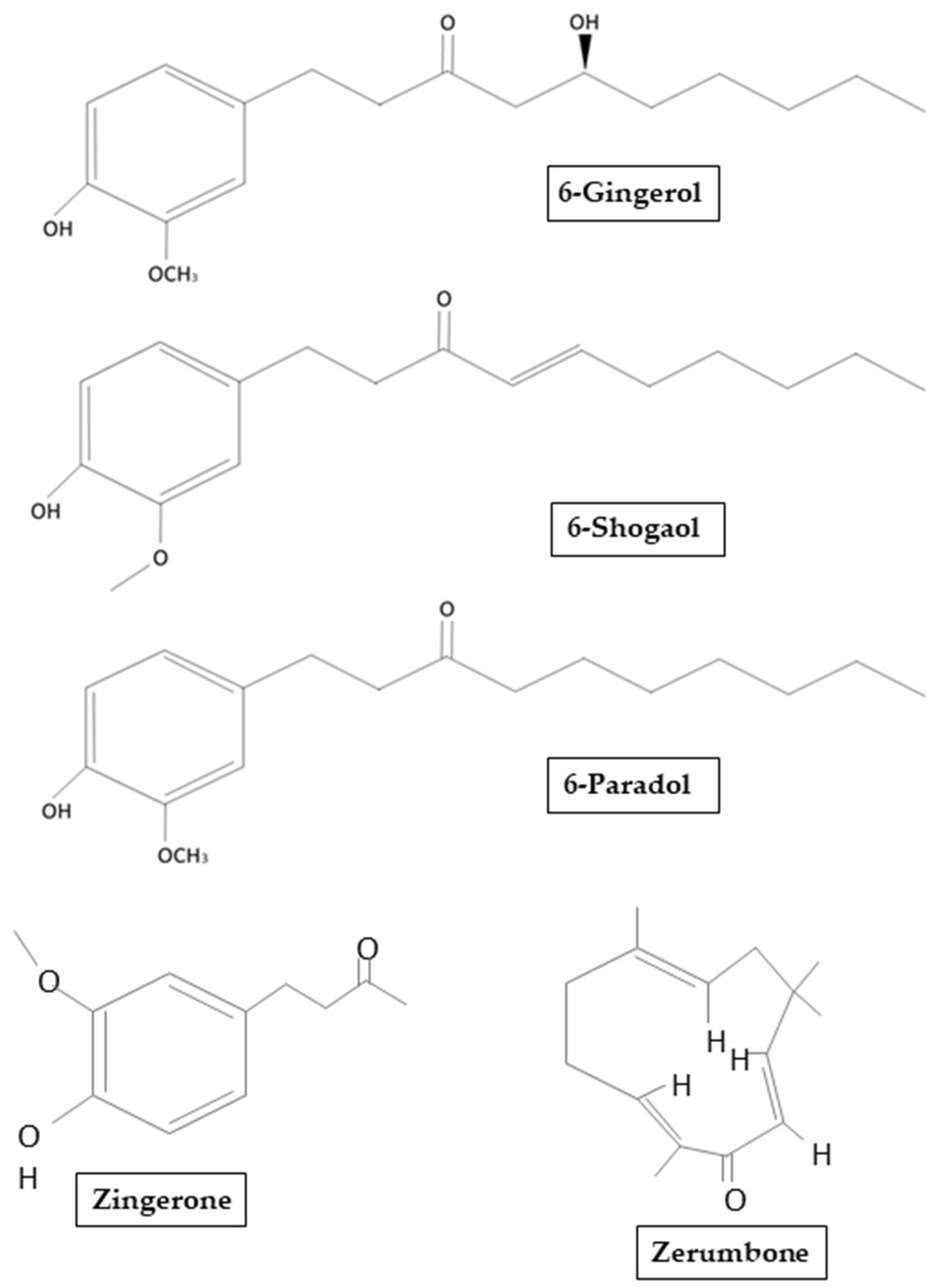

As tumours require the growth of new blood cells in order to spread, it’s possible that -gingerol could prove useful in their treatment. In lab conditions, and in mouse models of cancer, it has been shown to have an anti-angiogenic effect that is, it prevents the formation of new blood cells.

On top of this, research into -gingerol has suggested it could have applications as an anti-tumour agent. An anti-fever effect has also been noted. Additionally, it may have some anti-allergic effects, as it has been shown to inhibit the release of histamine from mast cells, a chemical whose effects manifest as the allergic response to an allergen. More research in recent years has suggested that -shogaol has a strong anti-coughing effect, and could help reduce blood pressure. It’s already known that a number of the compounds found in ginger have anti-inflammatory and analgesic properties in a similar manner to non-steroidal anti-inflammatory drugs, ginger is known to reduce production of prostaglandins by inhibiting the enzymes that help produce them. Many of these are conclusions drawn from studies with limited designs or small sample sizes, but there does seem to be some promise for the applications of ginger compounds in a variety of health issues. Of particular interest is the glut of health claims surrounding some of the compounds in ginger. This helps explain why dried ginger has a greater pungency than fresh ginger. Another class of compounds that can be produced by cooking or drying are the shogaols, which are approximately twice as pungent as the gingerols which proceed them. It’s less pungent than the gingerols, leading to a differing flavour to fresh ginger. Cooking produces zingerone, which is less pungent, and is characteristic of the ginger flavour found in gingerbread. Whilst these may be the primary compounds in fresh ginger, when ginger is cooked, the story changes. When the ginger is heated or dried, gingerols are transformed into different compounds, which can alter both the flavour and pungency. This particularly chemical is not too distant from capsaicin, the compound that gives chillies their spiciness, and piperine, found in black pepper. The pungency can be attributed to the presence of gingerols one of the main culprits here is the compound -gingerol. Of these, zingiberene is the most dominant, making up 30% of the root’s essential oil, whilst other contributors to the characteristic flavour of ginger include ß-sesquiphelandrene and ar-curcumene. Some of these compounds have also been investigated for potential health benefits, including potential anti-tumour activity.Īs with all spices, fresh ginger root contains a large range of chemical compounds. It adds a strong, pungent flavour to dishes as a consequence of a number of chemical compounds it contains additionally, these compounds are altered when the ginger is cooked or dried, producing alterations to its flavour. Ginger is a spice that can be commonly found in supermarkets and in the kitchen, either as the fresh root, or in dried, powdered form.


 0 kommentar(er)
0 kommentar(er)
